
























Ever see a commercial harbor full of Furuno Marine Electronics and wonder why the pros rely on us?





See why here









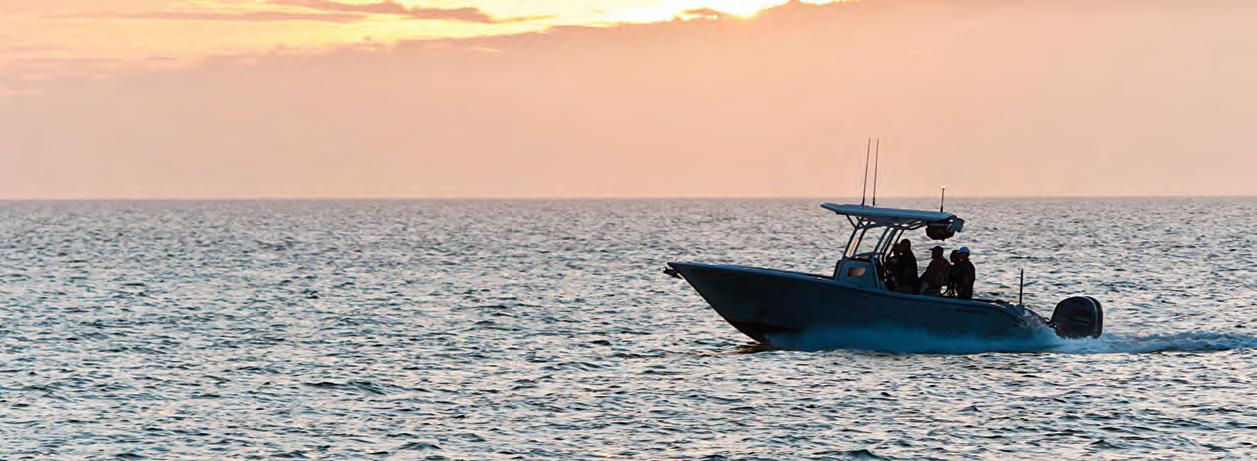
Are you ready to embark on your next on-water adventure? Before you set sail, here are fve things to know about boat insurance.
1. Boat insurance isn’t just for accidents
With comprehensive coverage, you’ll also be protected fnancially for theft, vandalism, and unexpected events like storms if you need repairs or replacements due to damage.
2. Accidents can happen to anyone
When accidents happen, boat insurance offers liability coverage for damages or injuries you cause while boating, up to specifed limits. It can also cover lawsuit costs if you’re sued.
3. Boat insurance can cover medical payments
Boat insurance offers a range of optional medical payments coverage limits, helping to cover medical expenses if you’re in an accident or someone is hurt on your boat, regardless of fault.
4. Most lenders require boat insurance
If you fnanced your boat, you’ll likely need boat insurance since most lenders require boat insurance to protect their investment. Additionally, some marinas or municipalities require proof of insurance for docking.
5. Progressive offers specialized boat coverages
Ever worry about getting stuck on the water?
Progressive’s Sign & Glide® On-Water Towing coverage** can help. It’s an additional coverage that steps in if your boat is disabled or breaks down on the water, paying for on-water towing, jump starts, soft ungroundings, and fuel delivery. Fuel cost isn’t included.
Don’t let unforeseen circumstances disrupt your voyage. Cruise with confdence thanks to Progressive Boat insurance. Because when it comes to your boat, peace of mind is the ultimate luxury.
Scan to get a quote in as little as 4 minutes.
to learn more.




















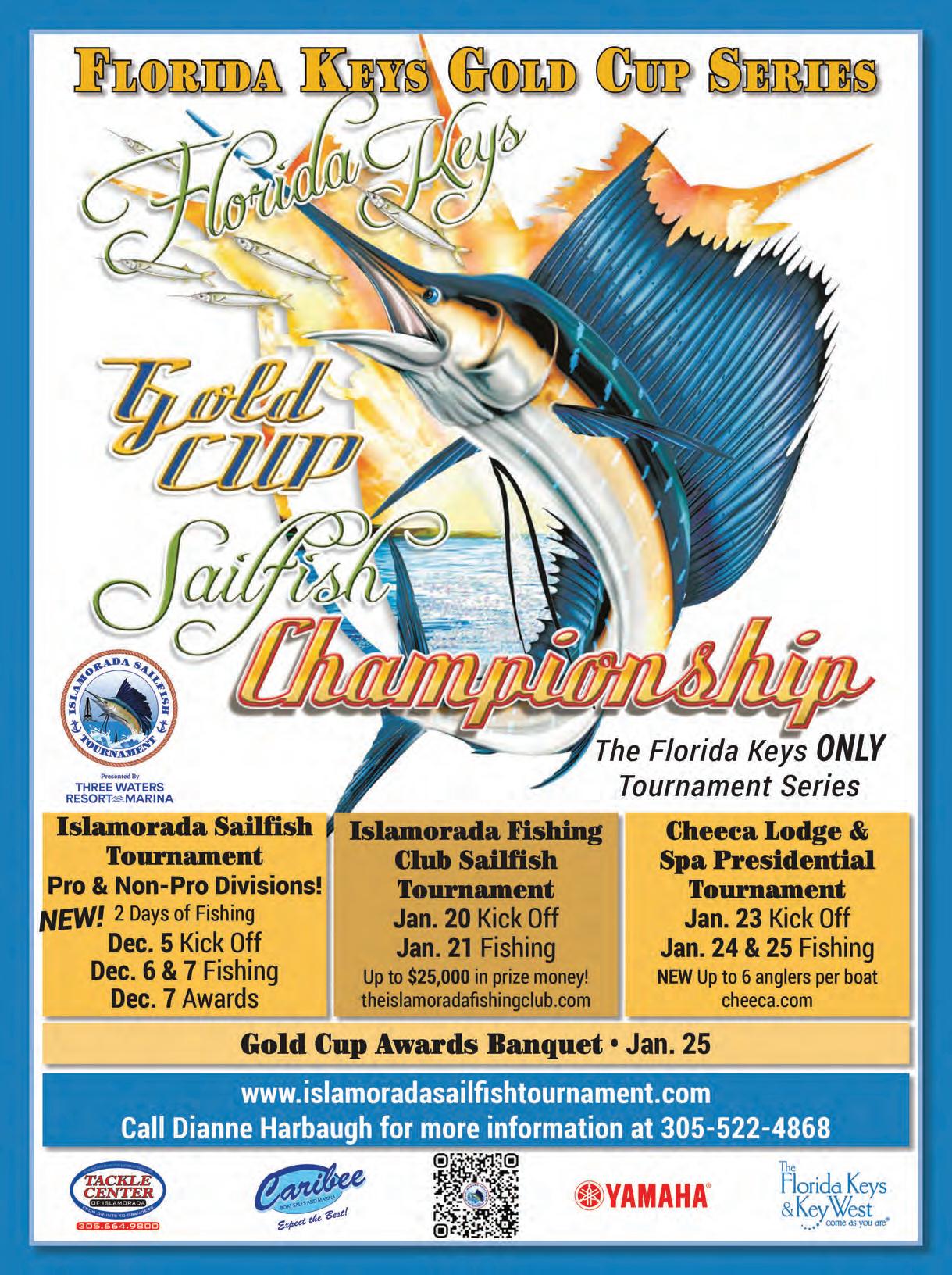


There’s remote, and then there’s Pulley Ridge. Sitting over 100 miles o! the coast of Florida, this underwater plateau is where the Gulf of Mexico drops into the deep blue, and it’s earned a legendary reputation as one of the most productive, and challenging, shing destinations in the U.S.


By Astrid deGruchy
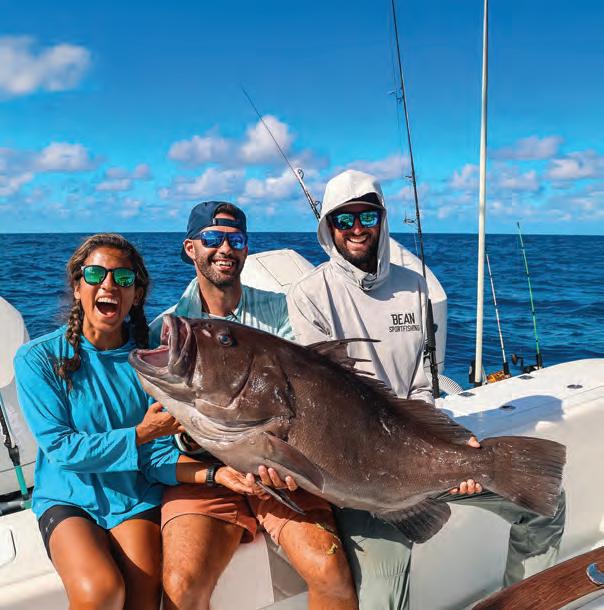

If you’re heading out there, you’ll need a serious o!shore machine. ink a 47’ Freeman or a Viking, something that can handle the long run and unpredictable Gulf conditions. is isn’t a trip for small center consoles or light tackle. Last time we were out there, we loaded up with PENN Fathom electrics paired with PENN Ally Electric rods & PENN International 50 VISX ready to drop into depths that test both your gear and your patience.
Using chicken rigs, we hauled in vermillion and yellow snappers in over 500 . of water that lled the box, but Pulley Ridge has a wild side where giant groupers and the occasional “what-the-heck-is-that” monsters lurk in the dark.


Pulley Ridge isn’t just another shing trip, it’s a rite of passage. e distance, the depth, the unknown, it all adds up to one of those bucket-list adventures every angler should do once in their life, especially with a crew of buddies who live for the chase. While you’re out there, you can even make a stop at the Dry Tortugas, another incredible o!shore destination rich in history and beauty.
Check out the full Pulley Ridge expedition on YouTube, only on Bean Sport shing TV.











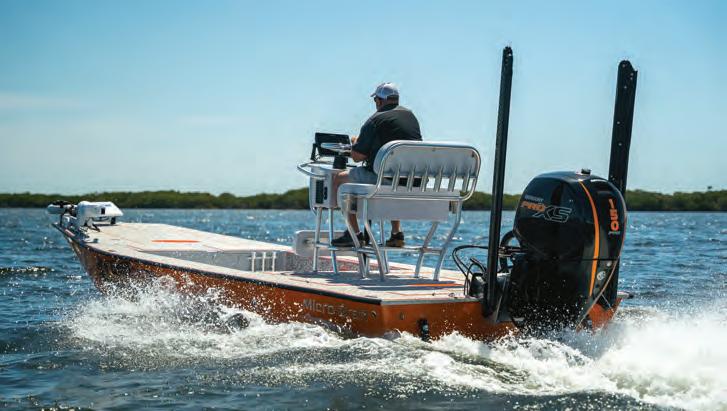

By Julie Graham

The Cherokee National Forest o!ers some of the best freestone trout shing in the Southeast. Spanning 650,000 acres across the Southern Appalachians, it’s the largest block of public land in Tennessee and it’s divided neatly in two by the Great Smoky Mountains National Park.
On the north side, mountain streams tumble through hemlock hollows toward Cosby. To the south, the waters of Citico Creek cut deep through wilderness ridges near the Unicoi Mountains. Together, they showcase the Cherokee’s range. From roadside creeks to backcountry runs, the forest o!ers anglers a taste of freestone Tennessee trout water.
Below the Great Smoky Mountains National Park boundary, Cosby Creek winds through the community of Cosby, Tennessee, o!ering accessible trout
water without the added park permit. ese lower stretches are regularly stocked by the Tennessee Wildlife Resources Agency (TWRA) and can provide productive shing throughout spring and fall. While access is somewhat limited, anglers will nd several bridges and pull-o!s along Highway 32 where they can wade in. e streambed is rocky and slick, with plenty of boulder pockets and undercut banks—good traction and careful footing are essential. Expect stocked rainbows with the occasional brown trout.
Inside the Park, the Cosby Campground section is ideal for bank shing and light wading, especially for those who prefer easy access close to trails and picnic areas. Brook trout dominate the upper reaches, while rainbows hold in the deeper pools below.
To the south, Citico Creek drains more than 20,000 acres of rugged country on the western edge of the Cherokee. Fed by the north and south forks rising in the Unicoi Mountains, Citico o!ers a blend of stocked and wild trout water—ideal for anglers who like a mix of easy access and adventure.
e TWRA regularly stocks Citico from Little Citico Creek to the Citico Creek Wilderness boundary, while the upper forks hold self-sustaining populations of wild rainbows and browns.
e Cherohala Skyway marks the southern edge of the Citico Creek watershed, and just driving it is worth the trip—sweeping vistas, ery fall colors, and the sound of water around every bend.
Autumn is prime time on both sides of the Cherokee National Forest. Water temperatures drop, trout feed hard before winter, and the hardwood ridges turn to ame.
• Match the Hatch: Early fall favors terrestrials; in November, go small with blue-winged olives, midges, and caddis emergers.
• Go Light: Clear, low ows call for 6X or 7X tippet and longer casts.
• Mind the Leaves: Dri leaves can snag a line—look for deeper pools below ri&es where trout hold under cover.
• Start Late: Cooler nights mean shing o en improves mid-morning as the water warms slightly.
For more information, including licensing regulations, visit the Tennessee Wildlife Resources Agency at https://www.tn.gov/twra.html.


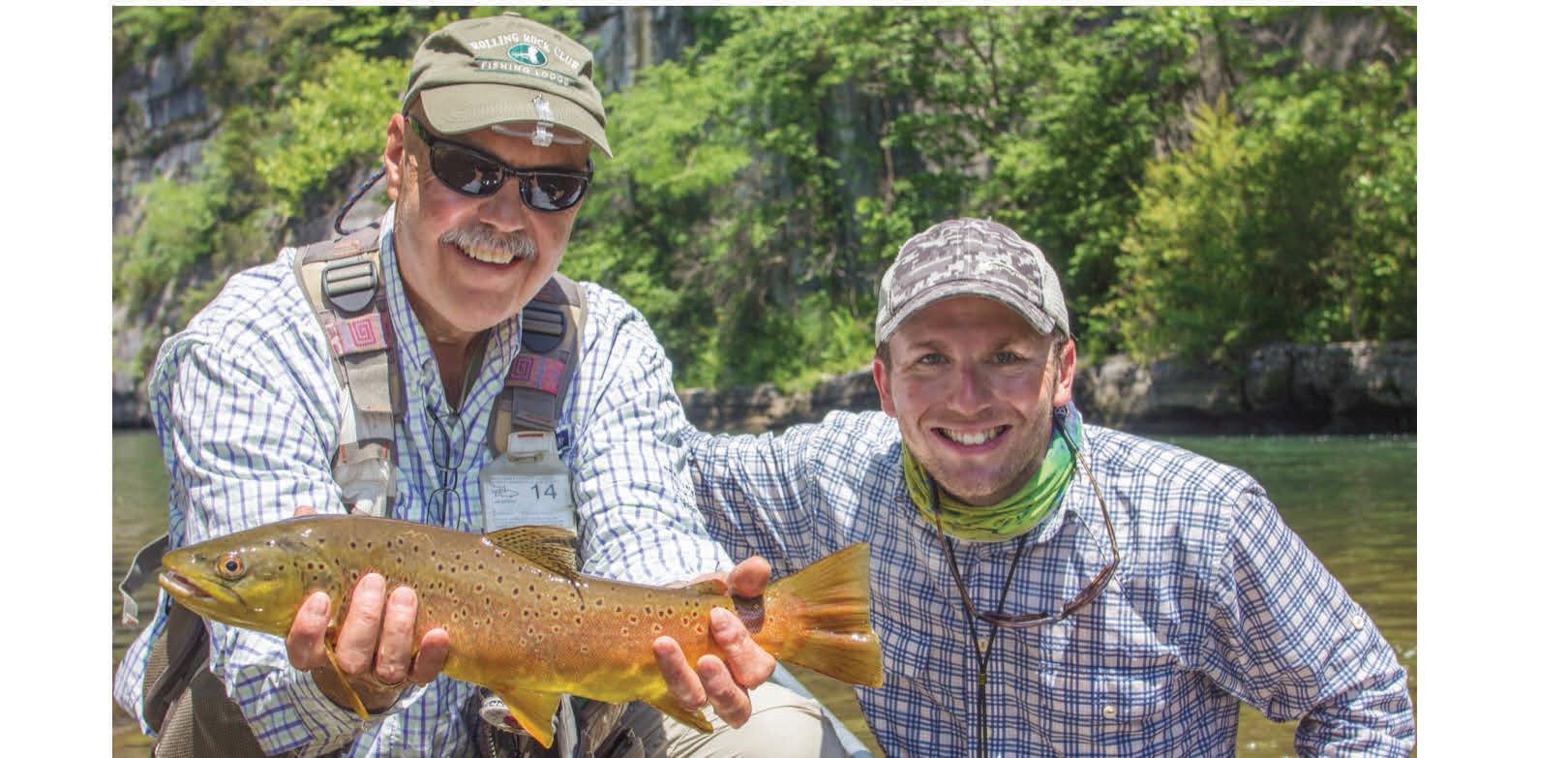








































































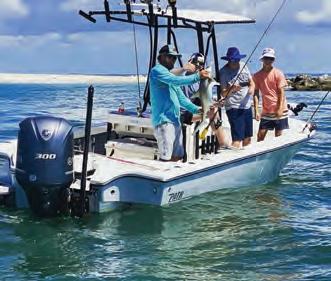



















By Capt. Michael Okruhlik
There’s just something magical about fall shing. e air cools, the bait thins out, and everything that swims gets a little hungrier. For me, it’s the holy trinity of the season— ounder migrations, trout and reds chasing shrimp under screaming gulls, and the early whispers of trophy trout time.
The Fall Flounder Run
Ah, yes, the famous fall ounder migration. is is more prevalent in some areas, but they can be caught all along the Gulf Coast. ese at ambushers stack up near the passes as they make their way to spawn in the
Gulf, gorging on bait along the way. When I’m targeting ounder, I switch things up. My go-to is a scented so plastic, preferably the Titan Series from Knockin Tail Lures. Not only are they scented, but they also have a rattling tail. Working this along the bottom will entice violent strikes. Since ounder love to bury themselves and wait in ambush, I keep that lure tapping bottom, twitching my rod sideways, whether I’m wading or boating. It’s a nesse game—part patience, part persistence—and when that telltale “thump” hits, it’s pure satisfaction.
Birds, Bait, and Mayhem
en there’s the chaos of gulls dive-bombing over shrimp and schooling sh—a sight that’ll make any angler’s pulse jump. Fall o en brings bigger trout into the mix, turning every cast into a thrill. I prefer to use a heavier jighead (1/4 to 3/8 ounce) to achieve the desired action without spooking the birds or the sh. Durable so plastics help keep me in the ght longer, and I mash the barbs down for quick releases and faster re-casts. When the schools settle and the birds thin out, a topwater lure can coax the bruisers to rise— and few things beat watching a big trout explode on the surface.
As fall rolls on, my focus shi s toward trophy trout—and timing becomes everything. I’ve followed solunar shing tables since childhood, back when my grandparents’ calendars marked “good” and “poor” shing days with little sh icons. Over the years, I’ve been both a believer and a skeptic, but I’ve noticed a pattern: my best bites o en align with solunar peaks. Now, I plan my day around them. Instead of running and gunning, I’ll anchor in a promising area during a predicted feeding window and wait it out.
On a recent trip with my boys, we missed the morning bite but stuck it out for the next solunar cycle. We anchored near a grass edge meeting a sandy at and, right on cue, rods bent. For seventy glorious minutes red sh hit every few casts, and sometimes we doubled up. My sons were smiling, the drag was screaming, and the solunar chart earned another believer that day.
So as the air cools and the sh feed up, grab a rod, bring a kid, and let the tides—and maybe the moon—guide your next adventure.
Capt. Michael Okruhlik is the inventor of Knockin Tail Lures,® and the owner of www.MyCoastOutdoors.com.




Mastry Engine Center has received the Suzuki Marine Super Service Award and has been ranked #1 in Suzuki Marine US Sales! 60 YEARS OF REPOWER EXPERIENCE!

RePower Packages designed to best ft your needs and not stretch your budget.
Financing available.

Rest assured, all Mastry Suzuki RePowers are backed by Suzuki’s industry leading 5-year factory warranty.

Stationed strategically around the East Coast, all Suzuki RePower Centers have achieved the highest level of Suzuki certifcations to meet and exceed your repower needs.
When Considering A Repower, Consider These Factors:
•Every Authorized Mastry Suzuki RePower Center has decades of repower experience providing proper rigging, controls, propeller matching and in water testing
•With a Mastry Suzuki RePower, owners gain improved performance, less noise and greater reliability
•Mastry Suzuki RePower’s exclusive Owner’s Edge Program*
•Mastry Suzuki RePower Centers use authentic Suzuki OEM parts and have factory certifed technicians

Since 2014, Mastry Engine Center, has been building the premiere Suzuki Outboard repower network in Florida. Today, Authorized Mastry Suzuki Outboard Centers have been exceeding expectaions in the Southeast for over two decades. Recently Suzuki Marine requested Mastry Engine Center to expand the network throughout the Northeast. Now boat owners from Maine to Florida can be assured of the best support for their Suzuki outboard repower project. All Authorized Mastry Suzuki RePower Centers provide the best options, information and package pricing for excellent performance in repower.
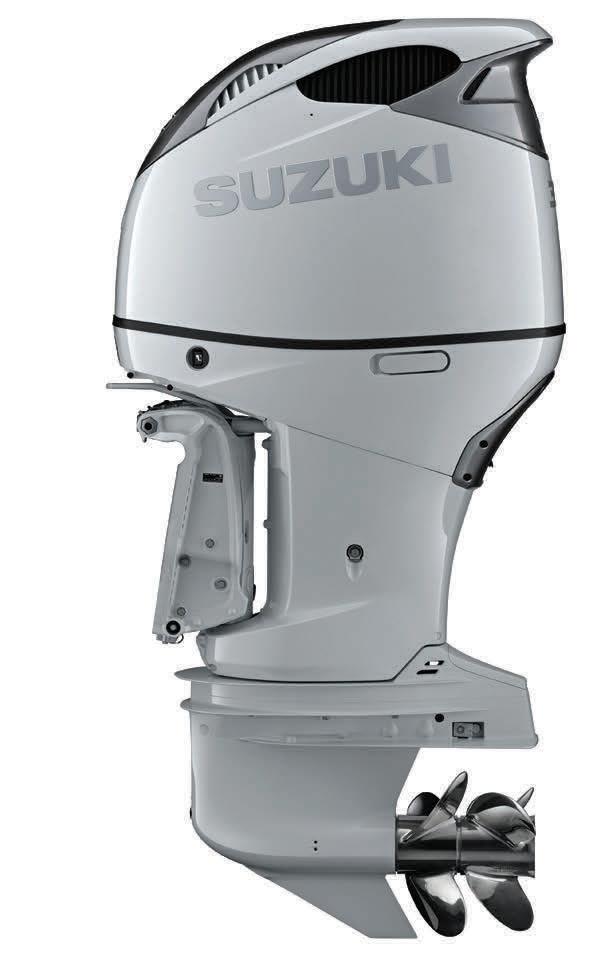



When you purchase a new Suzuki outboard from an authorized Mastry RePower Center you qualify to become a member of the Mastry Suzuki Owner’s Edge. Owners receive an identifcation card that provides them with important information about their Suzuki outboard motor as well as a passport to additional benefts during ownership. Members enjoy a detailed engine maintenance schedule, Mastry Suzuki RePower Trade Program and special pricing from Mastry Suzuki Partners *Get with the Program!


In the world of watersports and outdoor lifestyle, staying connected to what’s next isn’t optional—it’s essential. For 50 years, Surf Expo has been where the industry comes together to discover new products, make connections, and set the tone for the season ahead.
Returning to the Orange County Convention Center in Orlando, January 7–9, 2026, Surf Expo celebrates its 50th anniversary with an event that honors ve decades of driving the business of the waterman lifestyle forward. e show draws thousands of quali ed retail buyers, brands, and industry professionals from across the U.S. and around the world.
Surf Expo has long been the industry’s launchpad for what’s next. It’s where new brands make their debut and where trusted names unveil their latest collections. On the show oor, sustainability, functionality, and style continue to drive the next wave of coastal and outdoor retail—trends that shape what ends up in your store and, ultimately, in the hands of your customers.
Re ecting the growing connection between coastal and outdoor lifestyles, Surf Expo’s Shoreline Outdoor area continues to expand— bringing together products designed for life on the water and adventures on land. is growing segment highlights essentials for outdoor adventure, from versatile apparel and gear to innovative accessories that move seamlessly from coast to camp.
Shoreline Outdoor features brands and products that bridge categories—boating, shing, paddling, hiking, and camping—meeting consumer demand for versatility and performance. Retailers will nd quality, functional, and sustainable products built for modern outdoor enthusiasts. ink waterproof bags, insulated coolers, portable re pits, backpacks, multifunctional jackets, and drinkware designed for any setting. is lifestyle focused area captures the spirit of adventure—friends gathered by a re pit a er a day on the water, paddleboards pulled up on the sand, or cozy campsites under starlit skies. It’s all about embracing the outdoors in every way.
What makes Surf Expo such an essential stop on the retail calendar? It’s the unmatched variety. Hardgoods, apparel and accessories that bridge the gap between beachwear and everyday wear, Surf Expo delivers products that de ne coastal and outdoor living. Whether your customers are anglers, surfers, paddleboarders, kayakers or simply love the water or the outdoors, you’ll nd fresh lines and innovations that resonate.
Surf Expo remains much more than aisles of product—it’s a place to learn, connect and recharge your business strategy. Educational sessions, in-booth demos and networking events o er valuable insights into consumer behavior, merchandising and market trends.
Join them January 7–9, 2026 as they celebrate 50 years of Surf Expo— and experience rsthand why this show continues to be the heartbeat of the coastal and outdoor lifestyle industry.
Quali ed retail buyers register for free before 12/24 at surfexpo.com


By: Caitlyn Gatrell

Rainy days fishing are more fun and productive than one may think! Especially when you're fishing in the abundant than in Southwest Florida. Whether you're fishing in the back waters, along the mangrove or shore lines, or off the nearshore points, there's action everywhere. The rain really brings out the feistiness in some of these creatures, especially when other factors are already good too.
Rainy fishing days can have their moments of course. Sometimes the rain comes down hard and it hurts, especially when you're driving. If you don't have the right gear you can get soaked and cold. And honestly, sometimes the mosquitoes still attack you even in the pouring rain, so that combo can get a little overwhelming. But don't let that stop you from trying it out. Because when you're out there and the adrenaline arises from the conditions and active fish you'll feel more inclined.
Always keep an eye out for lighting and seek shelter or head out if needed. But if it's safe to go, you can set up an umbrella or take shelter underneath your T-top and let your bait sit out. My favorite is letting a live mullet sit in a flowing current or drop off. I take some shelter, enjoying the sound of the drops on the water's surface, and wait for my line to take off. Hooking fish on artificial islands is also fun. I like to use topwaters in the rain, often hooking up to feisty tarpon.
As a matter of fact, tarpon are the main species I target when I’m on a rainy trip. Especially in the back waters, we seem them rolling all around with bait squirming near the surface. I think big rain drops also can get them fired up, including any debris that may fall due to the wind. Sometimes we even seem them lunge out of the water, so it's pretty exciting to watch them chase and strike on our bait. Even if I'm soaked head to toe, cold, and miserable, I always get that awesome feeling when I hook up to one.
Tarpon aren't the only species to catch out there during the rain. We commonly catch various grouper species, jack, and more. The grouper are fun to catch as they are tough fighters and like to dig and hide. But when you're in tougher conditions and the rain is pouring down and the currents flowing hard, it's even more of a challenge. One that I accept and enjoy!
Overall fishing in the rain isn't everyone's cup of tea and that's okay. But as long as you practice safety and skill, you'll be okay. And once you hook up to some monsters during the storm, you'll really be okay! It's a challenge but it's one that can produce some great results. Tight lines to all!

By: Capt. Roanz and Capt. Rich A.
Welcome to the world of Reel Nautical Jigs. This month, we are highlighting one of our favorite jigs, the tried-and-true Bucktail. Of course, ours is kicked up about 5 notches over other bucktails, we call it the Buck and Bunny. They are available in three sizes from 1/8 to 3/8 and 5 great colors, using only the best of all-natural materials, and they all have oversized hologram eyes. They are all durable and we encapsulate all the heads, so they are chip resistant.
The list of species we catch on Buck and Bunnies is long, everything that swims in salt and freshwater eats bucktails. Two dear to my heart species, snook and redfish, and November is a great month for both species in most of Florida, however, we will be mainly focusing on the Southwest Florida area from Naples, Marco, Ten Thousand Islands, Everglades up to Charlotte Harbor. You will find snook inhabiting the passes to the backcountry creeks this month as they will be following bait concentrations and filtering in from the outside and heading up the back-country creeks for winter habitats. Mangrove shorelines with deeper edges will be holding numbers especially if close to shallow mud flats where they can sun themselves after a cool night if need be. Snook will be in any heavily concentrated bait areas like passes and river mouths. Night fishing can be excellent at this time of the year around lighted dock seawalls and riprap edges. Favorite buck and bunny is always white, but black in the deeper creeks works well. Redfish will be inhabiting some of the same places as the snook, especially on the deeper mangrove edges. Additionally, throw in large sand flats grass flats and oyster bars. Most of the reds will be in bays not too far from the open gulf, especially where there is good tidal flow and change from hard bottom to muddy bottoms. This is also a good month to find reds in some of the snook lights around docks, do not be surprised! I Love this time of the year to go skinny and sight fish reds on the low falling and low rising tides when they will be pushing up back out of the water crawling on the mud flats. Our 1/8-ounce Buck & Bunny really works well, and we have a blue crab brown that is the perfect color. Hope everyone has a great Thanksgiving, see you in December.!
We hope this little article gets you motivated to get out and get fishing and if you are so inclined please check out Reel Nautical Jigs either on line or at your local tackle shop, Marco Bait and Tackle, Mikes Bait House in Naples. Rio Villa in Punta Gorda, or visit us online at www. reelnautical.net or email: reelnautical239@gmail.com

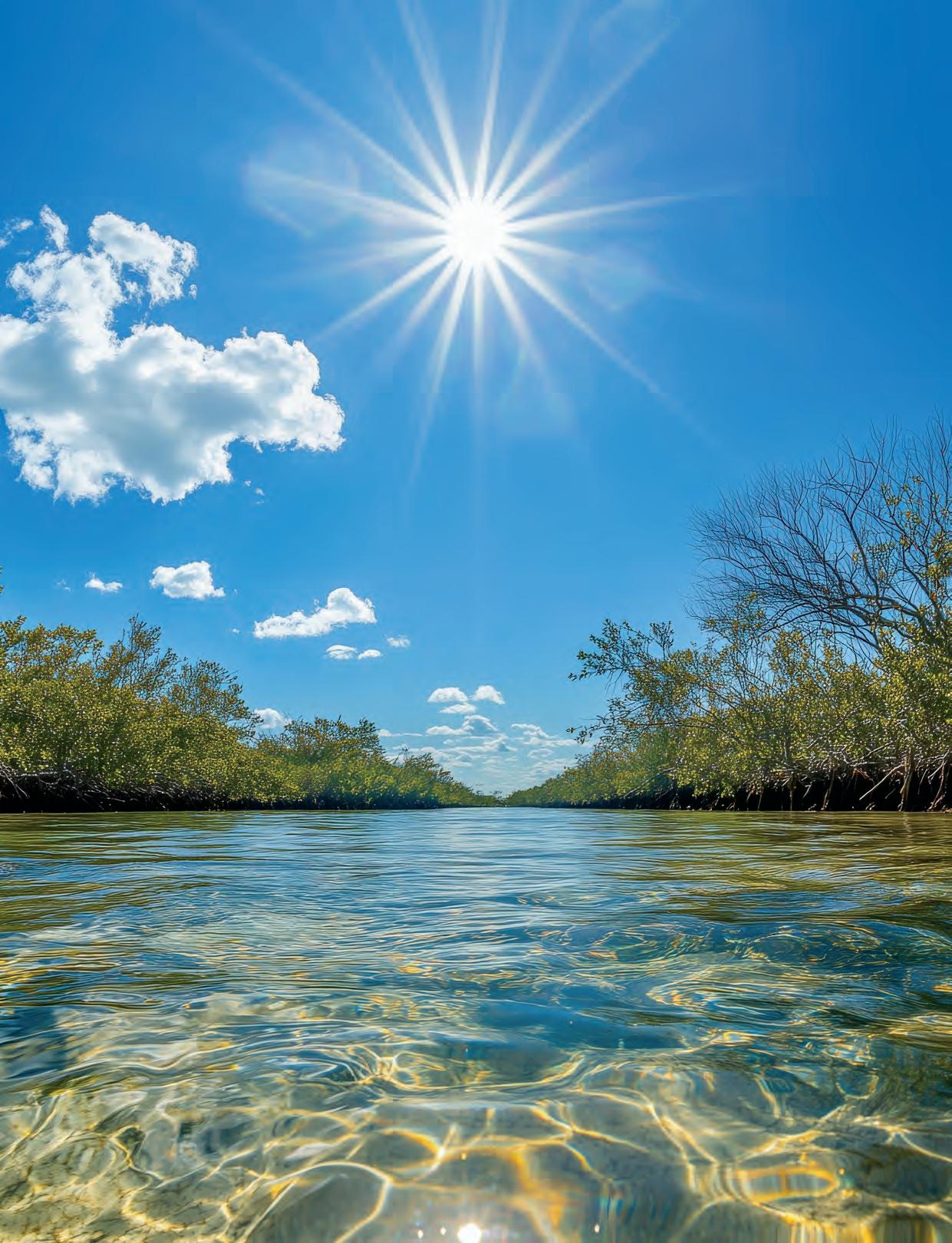




By: Jessica Hendrie

Every summer along Florida’s Gulf and Atlantic waters, red snapper season marks more than just an open window for anglers, it’s a time when friendships are rekindled, boats are prepped, and saltwater becomes the stage for memories that last long after the cooler’s been cleaned out. The first lines get cast early, usually before sunrise, when the horizon blushes pink and the hum of outboard motors echoes across glassy seas. For many, it’s not just about the catch, it’s about who’s standing beside you, the friends who share your bait, your laughter, and your silence. Red snapper trips have a way of grounding us, reminding us that the ocean rewards patience, teamwork, and a shared sense of adventure. There’s a rhythm to the day that seasoned crews know well. Someone drops the anchor, another rigs bait, and the first “fish on!” sets the tone. The rush of hauling up a 15-pound snapper, scales flashing crimson in the sun, is electric but the high-fives that follow are the real catch. These moments stitch people together in a way few things on land can. Friendship at sea feels different. It’s raw, simple, and built on trust. When the bite slows, that’s when the best conversations happen, stories surface, old jokes resurface, and quiet moments fill the gaps between waves. Everyone watches the rods, waiting for that next deep bend that signals something worth bragging about. Back at the dock, the day isn’t over. There’s cleaning to do, photos to take, and a grill waiting somewhere nearby. A fillet of snapper with lemon and butter turns into a meal that tastes like hard work and sunshine. It’s more than dinner, it’s a celebration of good company and the timeless pull of the sea. Red snapper season reminds us that life’s best days often start before dawn and end with tired smiles and salt-streaked faces. The fish may draw us out there, but it’s the people beside us, the ones who know how to tie a leader, tell a good story, and laugh when the big one gets away, who make it all worth it. Because in the end, it’s never just about catching fish. It’s about catching moments, the kind that keep us coming back, season after season. Happy Fishing.




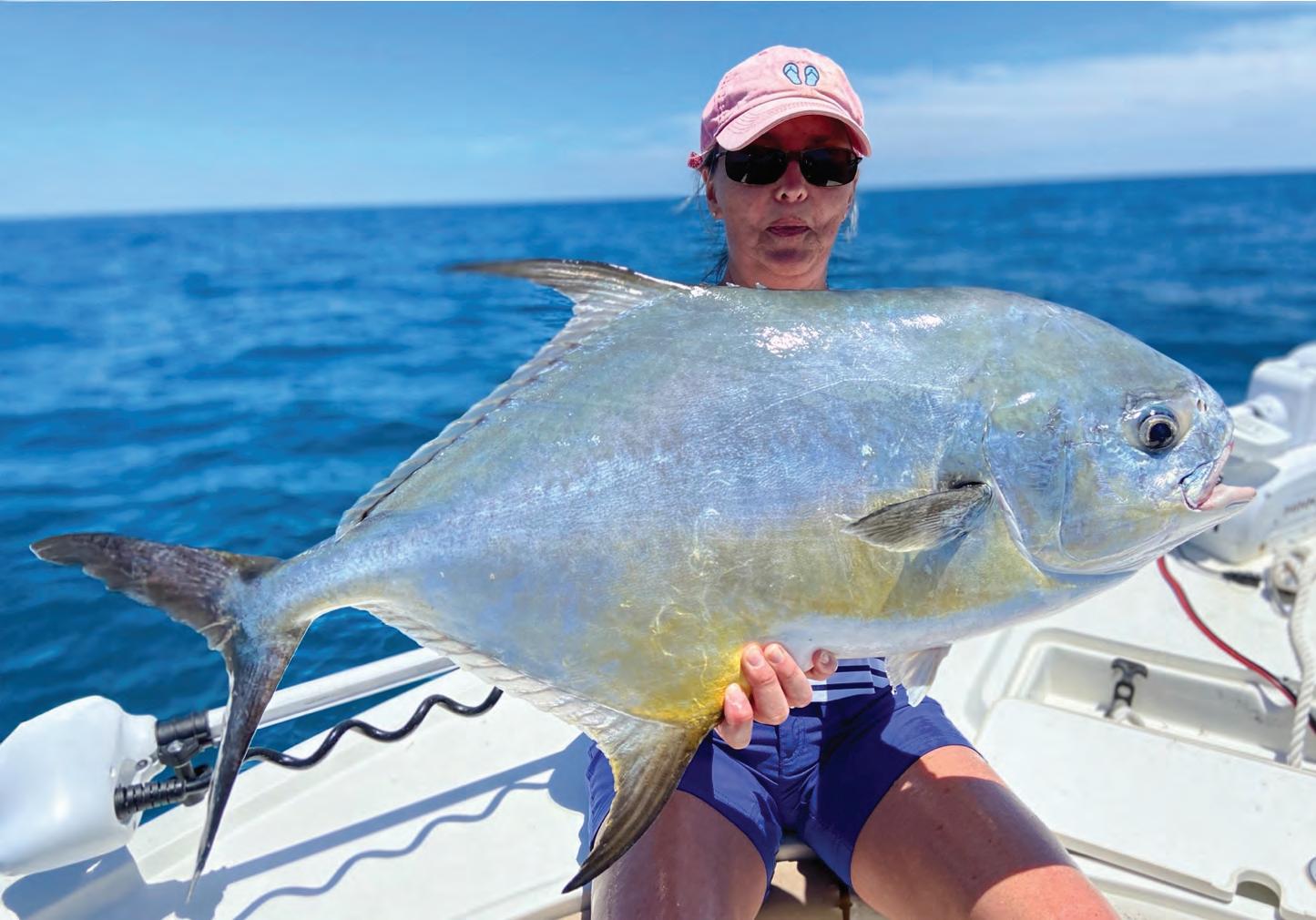
by Capt. Billy Norris
Well, we are finally through summertime and transitioning into fall! As we move into autumn, the weather, and in turn the water, will begin to cool off a bit. Although we won’t see our wintertime staples like kingfish and sheepshead quite yet, this time of year does provide some excellent angling opportunities!
Fishing this past month has been on fire! Both the backwater and nearshore waters have provided consistent action and have kept rods bent. In the backwater, snook, redfish and trout have been eagerly taking baits. Due to the extremely hot weather, the bite has been best either first thing in the morning, or right before sunset. During the heat of the day, you can still target fish but look for them in deeper holes, channels, or anywhere there is shade and moving water. The backwater bite has also been great at night. Fishing dock lights and passes has resulted in many great nights catching snook, tarpon and sharks.
Nearshore has also been stellar. The main stars over the past few months have been permit, cobia and mangrove snapper. Schools of permit or cobia have been present all over our nearshore wrecks the past few months, and have made some lifetime memories for many of our customers. In addition, the mangrove snapper bite has been crazy-good, with limiting out on fish from 16-24 inches not being uncommon. Cobia are less picky when it comes to tackle, so beefed up rods with 50-60 pound leader is our go to. However, permit and snapper are much more leader-shy, so 6 foot of 25-30
pound fluorocarbon is my tried and true method. As far as baits, we have been leaving the dock loaded up with a variety of baits including crabs, threadfins, pinfish and frozen sardines/threads. Due to the wide variety of fish eating right now, you are never sure what you are going to run into so bringing a selection of different baits is a wise decision.
Fall is absolutely my favorite time to fish in Southwest Florida. In addition to the weather beginning to cool down a bit, the wide array of angling opportunities that we are presented with is amazing! Over the next few months, I expect to see a continued cobia presence in the area, with permit hanging around as well. Snapper should also a staple during these months. There is also a good chance that we will get our fall migration of tarpon as they begin to travel through our coastal waters in preparation for wintertime. In the backwater, fall means big breeding snook in the passes, and redfish all over the place on the flats and estuaries. In the backwater use either pilchards or pinfish for best results.
Fishing over the past few months has been great, and I am anticipating an even better fall! Now is a great time to get on the water and get some quality fishing time in before the snowbirds return for the season. Whatever type of fishing you’re looking to do, give us a call at Pale Horse Fishing Charters and we’ll get you out on the water to catch ‘em up!

9
3















13
18
19
20
21
22
23
24
25 Tue 1:58 2.9
26



















































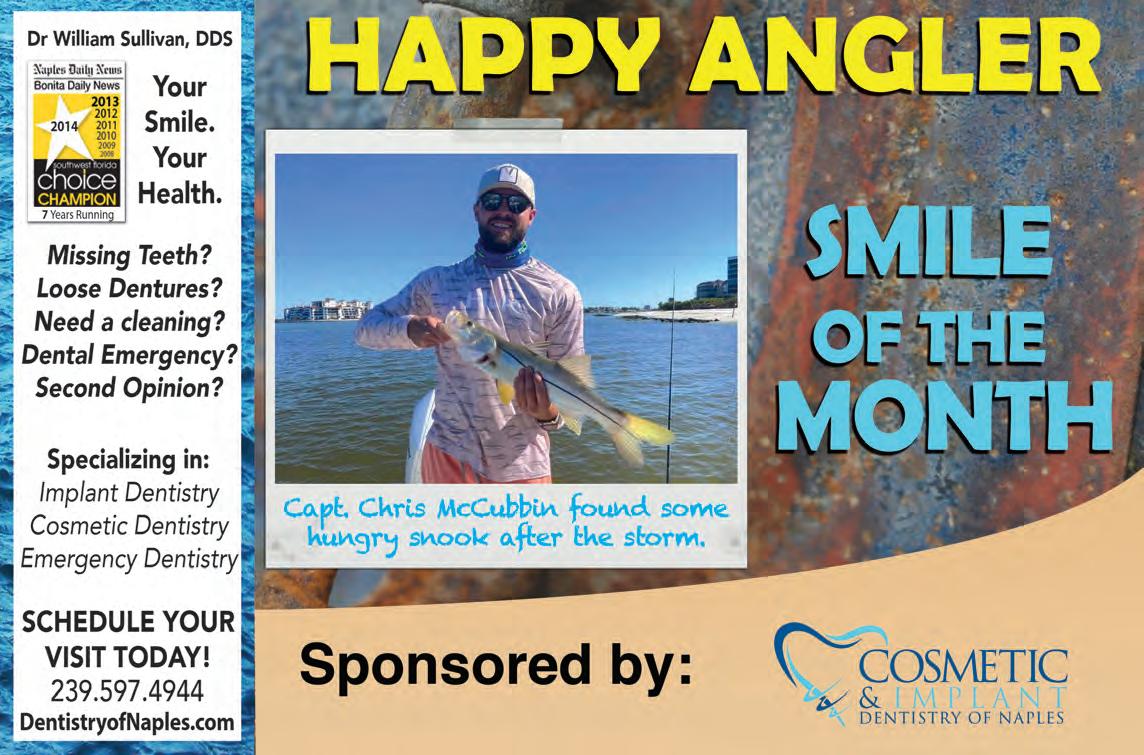
1
2






















20
22
23
25















































By: Capt. Andrew Bennett
If you ask many saltwater anglers in this area what they are fishing for, I would bet that the most common response you would get is snook. Snook have a lot to offer, they are great fighters, making long runs pulling out even the tightest drag, and often jumping several times in the course of the battle. They are plentiful and widely distributed in the Tampa Bay area. Their distinctive black lateral stripe and pronounced under bite make them a cool looking fish for any picture. Snook only live in semi-tropical places, which means that they are a special treat to catch for most American fishermen. They yield fantastic, thick, white, flaky filets that are great to eat. You could say that snook bring a lot to the table, and because of their popularity many of my clients ask for them by name, while many others learn to love them during a fishing trip.
Typically, during the month of November, we get our first cool weather of the year and the snook start moving away from the beaches where they spawned during the summer, to the river mouths, and up the rivers as the water temperature cools. It is a great time of year to catch these fish as they are active and feeding. One place the action can be non-stop on smaller fish, at the next spot may be slow, but after a wait, produce the big fish that will

give you the fight of your life. Snook can be caught on many different lures or on chunks of dead bait, but the method that has produced the best results for me has been to fish with live bait. I usually have a live well filled with shiners so that I can not only use them as bait, but also as chum. When I get to a spot that I think may be holding snook, I throw out not just a hook and line with a live bait on it, but also a few free-swimming baits as chum. If snook are in the area they often eat the bait on the surface letting me know that they are there, or even if I don’t see the fish feeding, I believe that the extra bait in the water often gets the snook feeding so that I am more likely to get a bite on my line.
Since snook are targeted by so many visitors and locals alike, they must be protected with a limited season, and even during the open season only a narrow size slot of fish no smaller than 28” and no bigger than 33” may be kept in our area of the state. In the Tampa Bay area, one slot sized snook per person may be kept from September 1st until November 30th. If you would like my help chasing your limit of snook, call me and book a trip!

By: Joe Sheaffer

Sometimes I just need a beach fix. I enjoy walking along the beach, looking for a fishy area or fish activity along the shore. One Saturday, I had a window during the morning that I could go fishing for a few hours. I headed to Manasota Key to fish along the beach. The weather has been beautiful and there are many beaches in Southwest Florida that have easy access for anglers. I love fishing the trough along the surf as I walk the beaches. I didn’t have any expectations on this day, I just needed to be on the beach fishing the surf. Spending time fishing the beaches doesn’t require a bunch of equipment. Usually, I have a spinning outfit and a small backpack with tackle, lures, water and sunblock. I had a limited amount of time, no need to haul a ton of equipment for this type of fishing. I typically start with a jig and paddletail, and depending on the conditions, I will make changes. I like to have a selection of jigs ⅛


oz to ½ oz which usually will help me to adjust depending on the tides and surf conditions. Fishing along the beach is really not much different than other types of fishing. I’m looking for points, blowouts, bait pods, structures that can hold fish along the surf. Whether I catch fish or not, spending a beautiful morning along our beaches is a blessing, one of the many reasons I moved to this area after I retired. Luckily this fishing day was successful, I was hoping to run into a few snook but instead I caught a few flounder, and a nice black drum, sheepshead and ladyfish. There were big schools of bait and the fish were hanging around the bait pods. It took a while to figure out how to get a bite, but I love that challenge. The morning along the surf was exactly what I needed. Hopefully many of you will find a morning or day to get your fix, good luck and keep casting!


by: Dan Carns

by: Dan Carns

This November should be a month to remember but you will have to spend a bunch of time fishing to take advantage of it. Southwest Florida has had a long run of mild winters that’s allowed the snook population a chance to really mature. We have a huge population of juvenile snook that are the result of a big population of breeding adults. This month they will have made their transition from the outer beaches and beyond back to their inshore “winter” haunts. Many will take up residence in the hundreds of canal systems but also in the backwater mangrove Islands and channels. Strategically positioned to take advantage of sunny, warm periods where they can travel out and about the islands but close enough to move back into sheltered canals and holes during cooler weather. While some shallow water boats will follow these fish into the backcountry, kayakers are going to have a huge advantage as we can get in very skinny and confined waters. We can also take advantage of our negative winter tides to access areas that are completely off limits to boats. Long casts and stealthy approaches will be required as these fish are super keyed into any danger in shallow water.
Redfish populations have also really increased and not just due to calmer weather but from a proactive stocking plan and a strict catch and release regulation. This past year we saw a tremendous number of redfish caught all summer long including a ton of “rat reds” indicative of a large, local breeding stock. This is all to say that this fall should be a stellar year for redfish. These are my favorite fish to target and luckily redfish love to hunt in very shallow water. So once again we’ll be in the same locations as when we target winter snook using almost all the same lures and baits.
Redfish and snook will readily take early morning top water plugs in very shallow water. Almost any “walk the dog” style plug worked relatively slow will get their attention. Bone is a very effective color but certainly not the only option. Use what works for you. I personally love the Badonk-adonk series from Bomber in redfish color with the tail spot and rattles. This lure takes some time to master and is not nearly as simple to use as the Heddon Super Spook and Super Spook Jr. which is my second favorite top water plug. Small paddle tail and shad tail rubber baits on a light jig head (I preferred red color jigs) or lightly weighted twist-lock hooks worked slowly through dips, potholes or super close to the mangrove over hangs should result in a strike. Take note of the enormous selection of artificial shrimp on the market but especially check out Wyze Guyz Tackle. According to Fishin-dips (Elon Hertzfeld) the new Kickin Skrimp, Ned-Rigged is the most effective artificial shrimp on the market! Remember to use long casts and stealthy approaches as the fish are even more wary of anything un-natural in shallow water.
It’s A wild World-Get Out there!
@paddlinandfishin






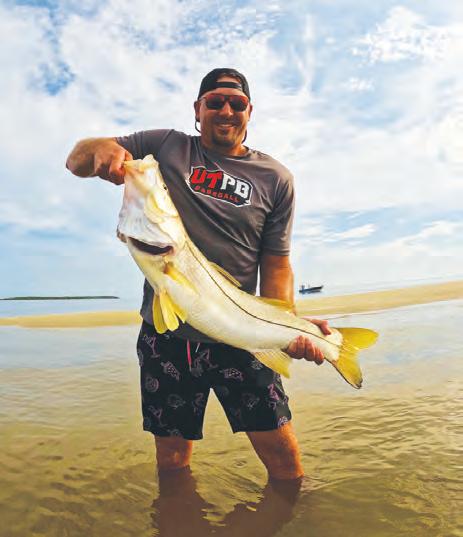


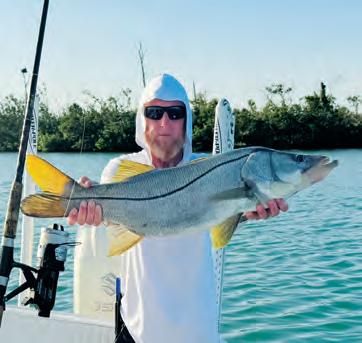



By Joey Bloom, Copper State Tackle Tournament Pro
There’s nothing quite like the rst real cold front of fall in the Southeast. One week you’re wearing a short-sleeve shirt and chasing schooling sh under bluebird skies, and the next, you’re bundled up, watching your breath in the morning fog, wondering where those sh disappeared to. When the water temps take that rst noticeable drop— usually sliding from the mid-70s into the 60s—it marks a big turning point in fall shing. e bass feel it too, and their behavior changes almost overnight.

A er a strong cold front, the rst thing I notice is how much tighter sh get to cover. ose aggressive, roaming schools that were chasing bait across shallow ats will suddenly scatter. e sudden high pressure that follows a front can make sh sulk and suspend, and the feeding windows get short. It’s not that they stop feeding entirely—they just reposition and get more selective. For me, this is when slowing down and thinking about the why behind each cast becomes crucial. Bass are still following the bait—usually shad— but their movements tighten up. I’ll start by checking shallow areas near deep water access, like secondary points, creek channel bends, or riprap banks near the mouths of pockets. ese are transition zones where bass can adjust depth easily as the temperature and pressure uctuate.
When those water temps dip, I turn to con dence baits that match the conditions and the mood of the sh. A lipless crankbait is one of my rst picks—it gives o a rattle and tight wobble that’s perfect for cooler water. I’ll run something like “Bill Lewis” 1/2 oz trap in a natural shad colors along



shell bars, grass patches, or around isolated wood. e key is to sh it methodically—make contact with cover and pop it o en. If the lipless bite feels o , I downshi into nesse mode. A 1/2-ounce jig with a Bait Cave Customs Cave Cricket Craw trailer is deadly around docks, brush, or isolated laydowns. I’ll pitch it on lighter line and really soak each piece of cover. e colder the water gets, the longer I’ll let that bait sit.
Another underrated player this time of year is a suspending Rapala jerkbait. When bass suspend er a front, that slow, twitch-pause-twitch cadence can trigger bites from sh that otherwise wouldn’t move far. On high-pressure bluebird days, I might make a cast, let the bait sit ten seconds, and only then give it a twitch. It’s all about patience and timing.
e best post-front patterns o en come down to consistency. Look for areas with a stable food source—places where bait sh stack up despite changing conditions. In reservoirs across the Southeast, that might mean a windblown main-lake point one day and a calm pocket the next. Keep an eye on your electronics, follow the bait, and don’t be afraid to adjust your depth until you see life.
Cold fronts separate the patient from the impatient. It’s a time to slow down, sh smart, and make every cast count. e bass might be moody, but they’re still there—and with the right mindset and a few Copper State Tackle baits on your line, you can turn those tough post-front days into opportunities.
Pro Tip: When in doubt, start with a lipless crankbait to cover water and locate active sh. Once you nd them, pick up a jig or shakey head with a Bait Cave Customs ick Stick worm to milk the area for those extra bites. You can grab both at Copper State Tackle—the gear I trust when every ounce matters. Follow all of Joey Bloom’s shing and fun on Instagram, Facebook, and YouTube at Joey Bloom Fishing.



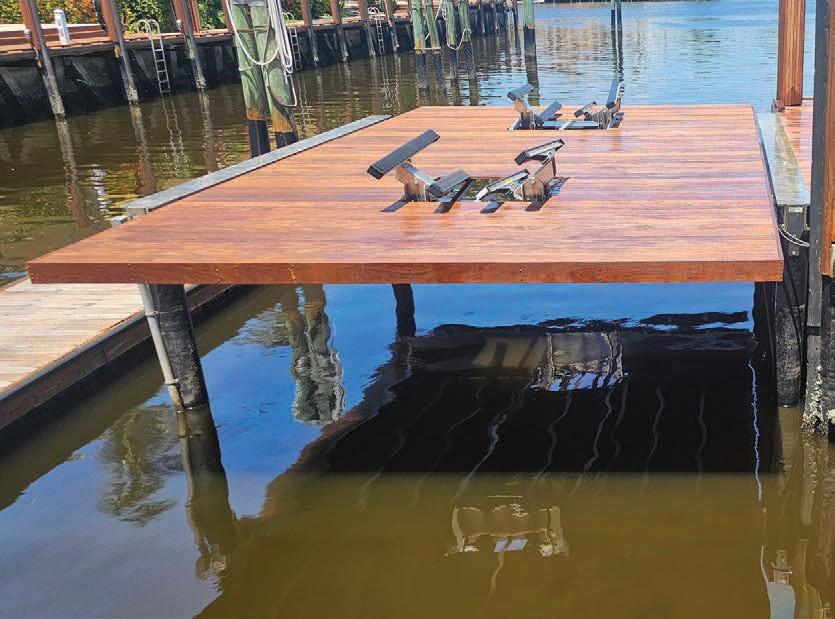
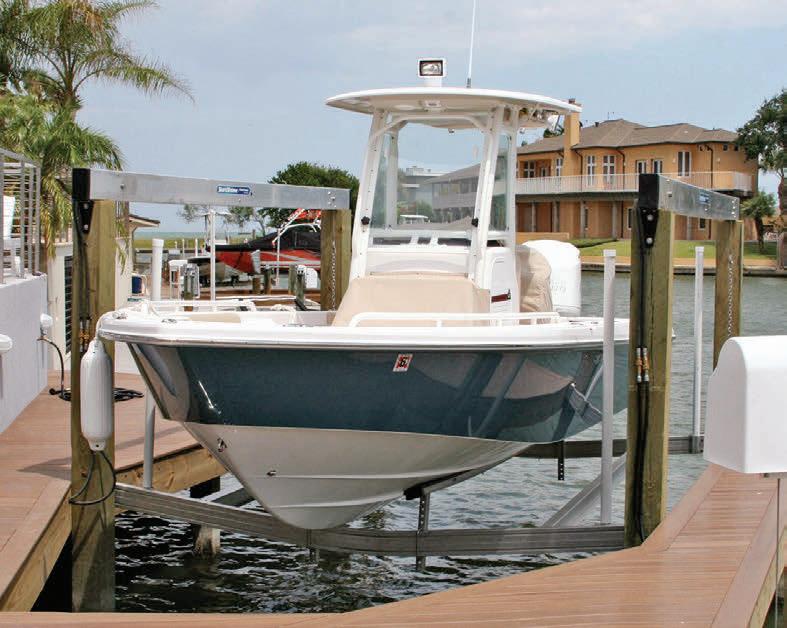


ShoreStation hydraulic boat lifts are a reliable choice for coastal residents and boating enthusiasts alike. Their strong construction, made with corrosion-resistant materials, allows them to withstand harsh environmental conditions, including sun, storms, and saltwater damage. ShoreStation provides a steadfast solution for protecting waterfront investments, o ering peace of mind to owners in the Sunshine State.
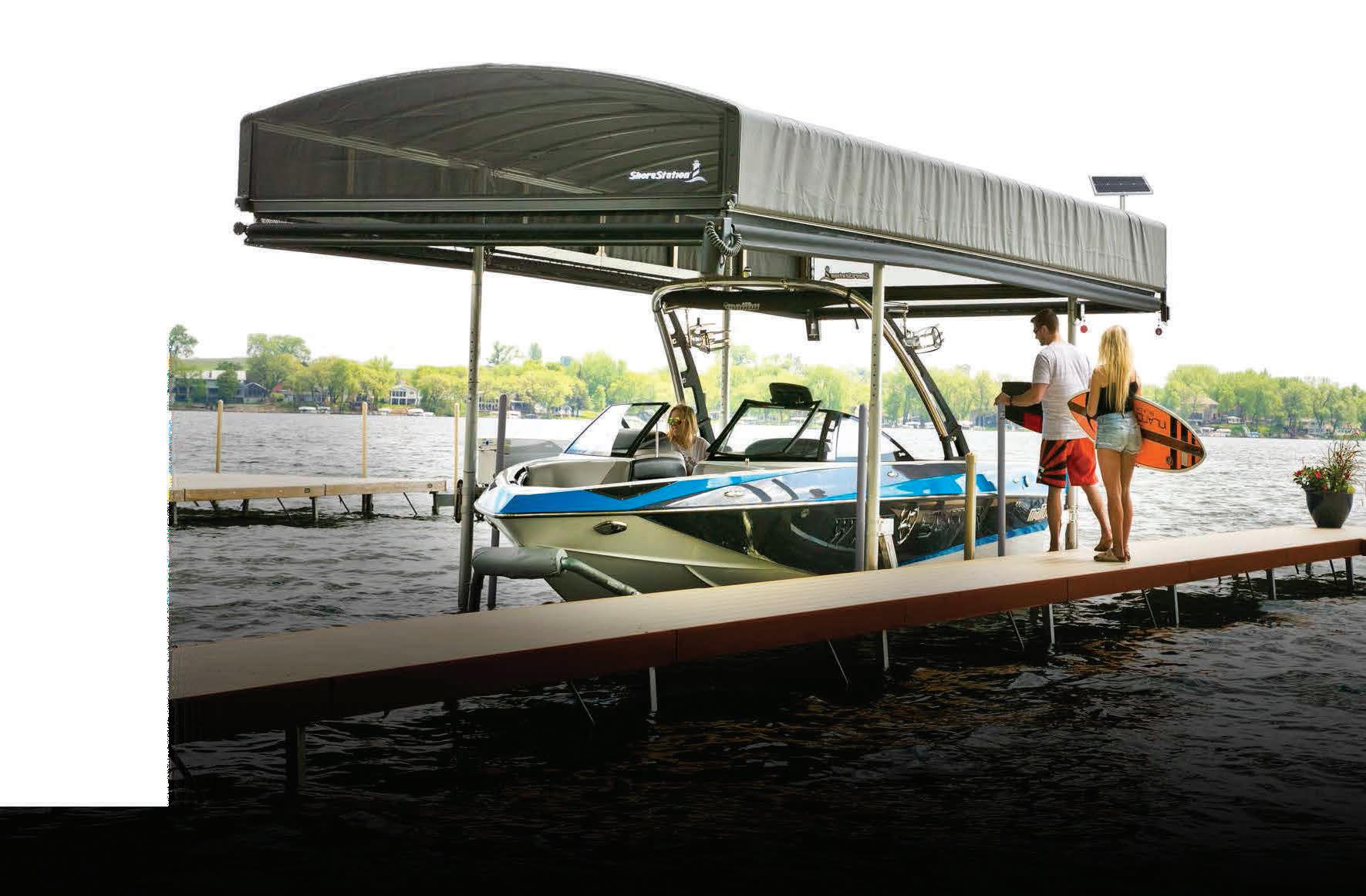






Equipped with exceptional weather resistant fabric and breathable SunTex 80 woven mesh ends for maximum protection and durability,

Made from the highest quality materials, our innovative hydraulic boat lift is one of the fastest and safest lifts on the market today. When you have a hydraulic lift, there’s no need to worry about wind and waves getting in your way. This lift will give you con dence to safely land and secure your boat in less-than-ideal conditions.
Never miss another moment on the water. Power your lift with clean, free solar power. Our speedy 20 watt charger features solar regulator drainage protection, saving your battery from permanent damage caused by overcharging.









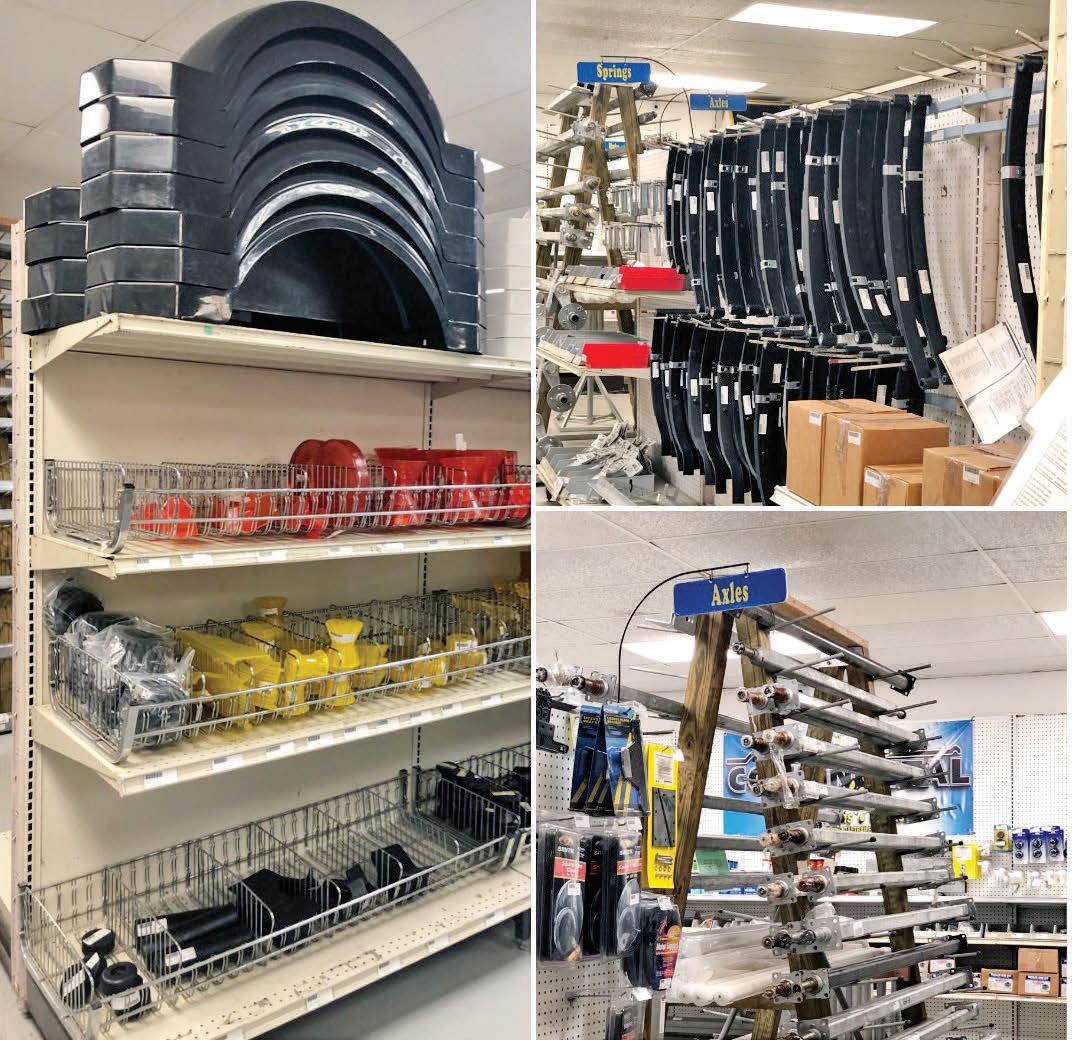






















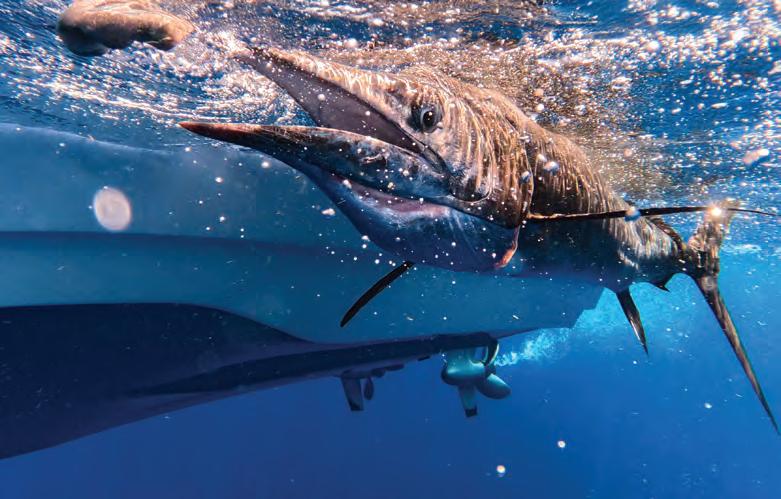
By Will Schmidt
Sail!sh are known as the fastest !sh on the planet, but they o er more than blazing speed to those who chase them o Florida’s east coast, such as I did on a recent !shing excursion. Spectacular surface bites and astonishing acrobatics make these !sh a coveted catch for even the most experienced anglers. For !rst timers, it’s an adrenaline !led !ght that will stick with you long a er the !sh swims back into the cobalt blue Atlantic. is trip was special for a few reasons. First, we had rising country star Ben Gallaher (IG: @Ben_Gallaher) with us. Ben is an avid outdoorsman and bass !sherman, but he had never caught a saltwater !sh. I was also excited to !sh with some new friends, Capt. Geoge Gozdz of “Unfathomed” (IG: @captgeorgegozdz) and Chris Bishop, VP of marketing at Yo-Zuri (iG: @Yozuri_Lures).
A er just a short run o Port St Lucie, we set our spread, and I could sense any strikes would likely be dramatic. e water was crystal clear and glass at giving us a great view of any action. e !rst !sh in, came crashing into the spread chasing and slashing at a bait with its bill. Unfortunately, as aggressively as it came in, it turned and retreated without eating.
As we reset the spread anticipation grew to !nd Ben’s !rst saltwater adversary. Fortunately, another sail came in a smashed the right rigger. However, it ran right at us, and we were never able to get tight. Undaunted, we set up again. Soon all the baits were nervously darting on the surface. e le atline erupted as the sail slashed, splashed and devoured the bait. Ben was on, and this !sh leapt and twirled with all the acrobatics of a Cirque du Soleil show. ere was still another to eat and moments later we doubled up. Both !sh cooperated with plenty of arial antics and a er a good !ght we had both !sh to the boat. To say Ben was pumped to land his !rst bill!sh is an understatement. Amped up with adrenaline and ready for more he could only beam with an ear-to-ear grin and say “let’s go!”










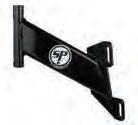

Fall !shing o of Port St Lucie o ers warm water and a hot bite without having to battle high winds and cold temperatures o en associated with winter sail!sh !shing in Florida.. Moreover, it’s not di&cult at all. We were simply bump trolling large, bridled thread!ns. Bridling helps the bait last longer and doesn’t allow for the hook to turn into the thread!n causing a missed strike. Our tackle was medium Penn Carnage rods with Authority reels lined with Yo-Zuri Super Braid topped with Yo-Zuri’s Disappearing Pink Fluorocarbon leader. ese setups gave us the sensitivity to feel the “eat” and the stealthiness to fool even the most cautious of !sh in these clear conditions. On your next trip don’t rush past these exciting sails, stop for some fun acrobatic action.
Will Schmidt is a seasoned tournament angler who has been writing about shing for more than two decades. Follow Will on Instagram @saltynstrong.

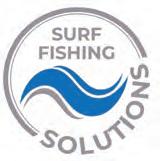

It’s no fsh tale when you run with a John Deere. You can get everything done faster and easier, so you get more time on the water. Plus, our special offers make them the catch of the day.



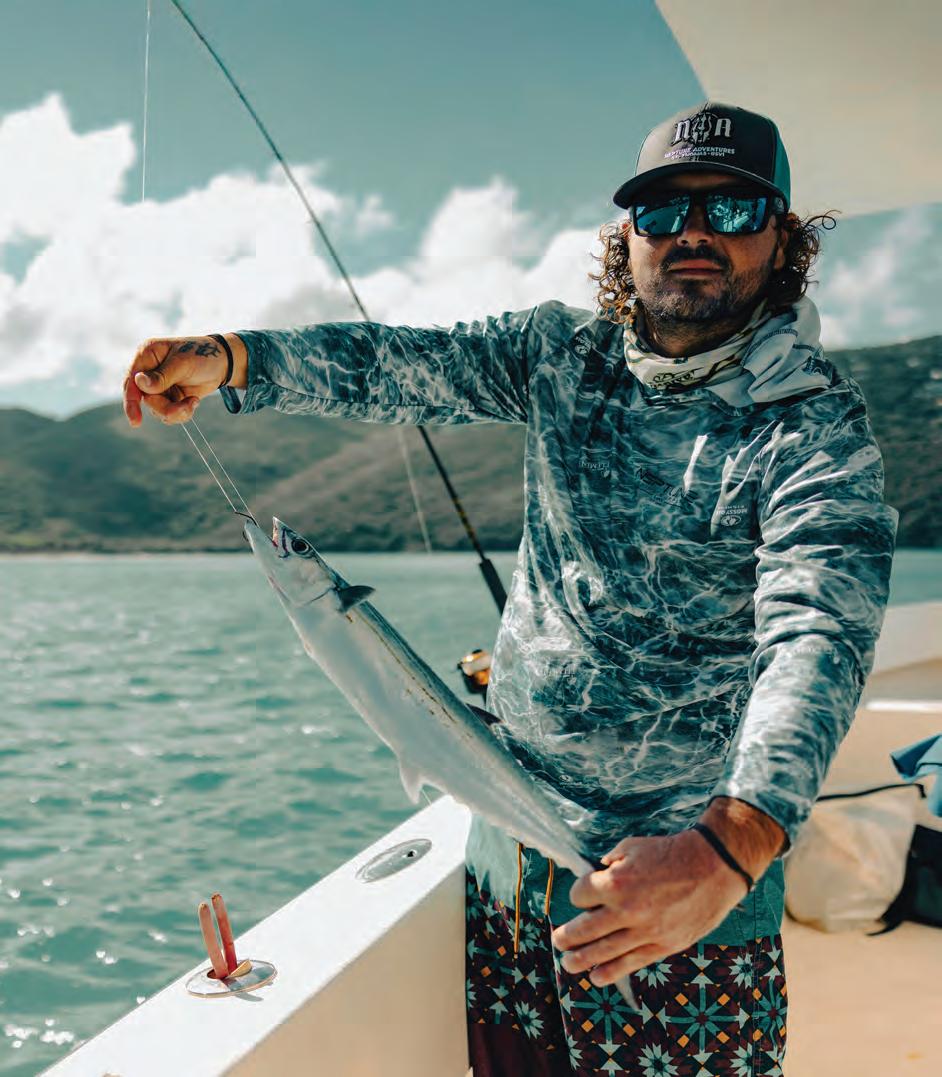
Anglers from around the world come to the U.S. Virgin Islands to !sh our incredible turquoise waters for trophy blue marlin, black!n tuna, wahoo and mahi-mahi. And with no passport required for U.S. citizens, it’s easy to plan your next !shing trip. Whether you want to set o on a crewed charter complete with a professional captain or prefer to simply cast a line from one of our scenic white-sand beaches, get ready to reel in the big one. Plus, many out!tters can customize your trip to include thrilling underwater activities like snorkeling.
O the island of St. Croix choose your own adventure, whether you’re looking to !sh o shore for mahi-mahi, wahoo, king!sh, tuna and blue marlin, or nearshore for tarpon, snapper, mackerel, rainbow runner and jacks. Seasoned crews who have been !shing the waters of USVI for decades will take you on customizable charters in search of catching your trophy !sh of a lifetime. Some out!tters o er complimentary !sh cleaning services, so all you have to do is throw your coveted catch on the grill or in the pan!
From St. John, troll for big game !sh—blue marlin, sail!sh, tuna, mahi-mahi and wahoo—on an o shore charter. Opt for a nearshore charter to catch bonito, barracuda, rainbow runner, snapper and
sharks. Or join an inshore bottom !shing trip to cruise the USVI’s deep-water reefs. Whether you’re an experienced angler or a novice needing some guidance, you’ll !nd an out!tter equipped with all the top-of-the-line !shing gear you’ll need for a successful day at sea.
About 20 miles north of St. omas is the North Drop, an area unparalleled for its big game !sh. Book a deep-sea !shing charter and sail over to this corner of the Caribbean that boasts more blue marlin bites per boat than any other place in the world. Half-day to 10-hour o shore bait !shing charters are ideal for adventurous anglers eager to experience the island’s famous North and South Drops. A mix of trolling and live baiting makes for mega catches, with yellow!n tuna, wahoo, mahi-mahi and blue marlin the most common catches of the day.

Surrounded by pristine blue waters, it’s no surprise that fresh seafood is a delicious part of nature’s bounty in USVI. You’ll !nd plenty of seafood-focused restaurants, from elegant !ne dining to laid-back waterfront eateries. Some out!tters even o er a stop at a seaside restaurant as part of their !shing excursions.







When the leaves start to turn and the water temps dip, bass anglers know what time it is—the fall feed. Bass are chasing bait like crazy, and it’s one of the best times of year to put big !sh in the boat. e trick is knowing what to throw as the season shi s. Here are !ve proven fall baits that will help you stay on the bite no matter what the lake throws at you.
Spinnerbait: Few baits scream “fall” like a spinnerbait. When the wind picks up and shad push shallow, it’s hard to beat a double willow blade ashing through the chop. e ash and thump imitate a school of eeing bait!sh, and hungry bass can’t resist. Target windy points, creek mouths, and shallow ats anywhere the bait’s getting pushed around.
Lipless Crankbait: is one’s all about covering water. Fall bass are constantly on the move, and a lipless crank lets you !nd ’em fast. Burn it over grass, rip it free when it hangs up, and hold on! at reaction bite is what fall !shing’s all about. Red or chrome patterns are money this time of year, especially when bass are chasing shad.
Jerkbait: Once the water clears and the temps drop into the 60s, it’s jerkbait season. Work it with a twitch-twitch-pause cadence, and you’ll mimic dying bait!sh to perfection. is lure shines around suspended bass that hang
o points or creek channels.


RJust be patient. Sometimes the bite comes right when you least expect it, on that long pause. Squarebill Crankbait & Swimbait: To round out your fall lineup, keep a squarebill and a swimbait on deck. A squarebill is your go-to for shallow cover stumps, rocks, laydowns, anywhere bass are ambushing bait in the backs of creeks. Meanwhile, a so or hard-bodied swimbait is ideal when you’re around big !sh feeding on larger forage. Slow-roll it through bait schools or along creek channels for some of the biggest bass of the year.
Fall is all about !nding the bait, and these !ve lures all mimic shad in their own way. Whether you’re slow-rolling a spinnerbait through wind-blown banks or ripping a lipless crank across a at, the !sh are feeding and it’s your job to get in on the action. Grab a few of these baits, follow the shad, and enjoy one of bass !shing’s most exciting seasons!
Tyler Woolcott is a professional tournament angler and guide. Check out his website at www.tylerwoolcott shing.com.

ed!sh are one of the most sought a er game !sh by inshore !shermen from Texas to the Carolinas. ey are great !ghters; they are great tasting; and they are perfect for sight !shing because they love super shallow water. Red!sh are part of the drum family and have four nostrils. is tells us that scent is their chosen sense while searching for food in dark and murky water.

e best red!sh lure that I have ever used is the 3-inch Berkeley Gulp! Shrimp. Berkeley Gulp! products are the smelliest baits that I have ever smelled and red!sh love them. ere are probably other stinky baits that work, but I haven’t found one that is comparable to Gulp! products. e best colors are anything with brown and gold glitter. Rootbeer and new penny are the best choices. e second best lure for catching red!sh is the gold or copper weedless spoon. ese are great search baits when you cannot see the red!sh. A slow retrieve with almost constant contact with the bottom is the way to !sh these lures. ese lures are exceptional for casting. ey cast a mile and let you cover a lot of water as you search for the schools of red!sh in the shallows.
e third best lure for red!sh are 3- and 4-inch paddletails rigged weedless. is is another great search bait for covering large areas of water. You will want to retrieve your paddletail in a similar way to your spoons. Make sure to bounce it o the bottom as you slowly retrieve it.
Contact Capt. Mike Smith, owner of Fish Your Ass O Charters, at (561) 339-2317, contact@ shyourasso .com or shyourasso .com.










“I never expected it to be so beautiful that it takes your breath away.”
— Kaya C., on Stauer Opals
In a quaint village, nestled between rolling hills, lived a young woman with a deep appreciation for gemstones. Her grandmother gifted her a delicate cross pendant adorned with opals. "e opals shimmered with a mesmerizing play of colors, reflecting hues of blues, greens, and fiery oranges. Her grandmother shared the legend of the opals, believed to bring hope, purity, and luck to those who wore them.
Using this story as inspiration, Stauer brings you the Opal Spirit Cross Pendant. With over 2 total carats of Kyocera lab-created opals set in .925 sterling silver encased in yellow gold, this pendant is a radiant celebration of beauty and craftsmanship. Each opal captivates with a kaleidoscopic dance of fiery oranges blending into oceanic blues, streaked with flashes of vibrant green that seem to come alive with every movement. "e shimmering opals are skillfully arranged to create an enchanting, otherworldly glow, embodying the spirit of hope and harmony. "is breathtaking combination of color and craftsmanship is available as a limited availability of only 930 pieces, making it a rare and treasured addition

to your jewelry collection. Plus, when you order today, you’ll receive the Opal Spirit Cross Pendant at an impossible price of just $59 normally $149!
Don’t miss your chance to own this exclusive tribute to timeless elegance and meaningful symbolism.
Jewelry Speci!cations:
• Pendant: 2 ½ ctw. Kyocera lab opals and DiamondAura® accents. Yellow gold-finished .925 sterling silver setting
• Chain: 18" gold-clad .925 sterling silver chain
Opal Spirit Cross Collection

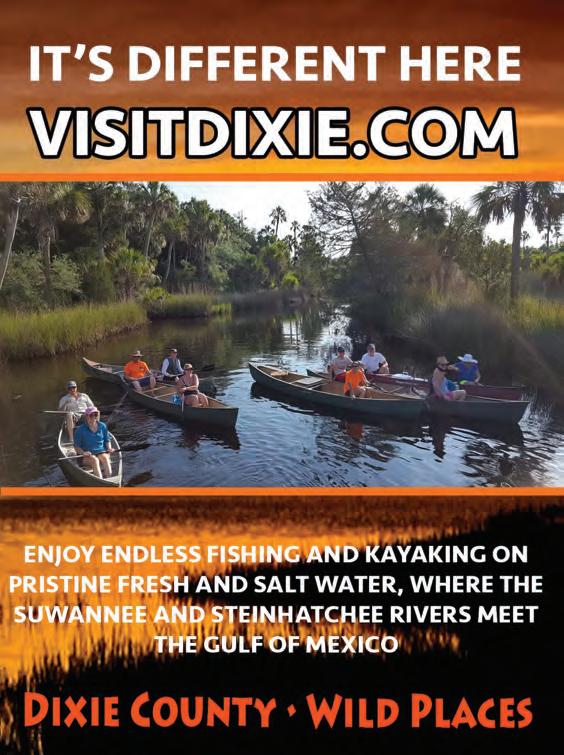


ovember is almost a completely unique month of the year. We’ll start getting the !rst real cold fronts, and this will pile the bait on temp breaks. Structure on the bottom will certainly hold the grouper and snapper on the bottom, but pay attention to the recorder and the marks in the mid water column. ese marks can be a number of the targets we’re looking for. Black!n are a given during the month of November, but it’s “go time” for wahoo and yellow!n. e bait can stand colder water than the pelagics. is is one of their biggest defensive strategies, and why you should have a (realistic) jig ready that can !sh 75-150 feet deep around the bait balls because the surface water will likely be as much as a few degrees warmer that the surface water due to the cold wind blowing overhead. Keep live baits out on circle hooks and ourocarbon and try to get some lower in the water column. ese live baits are black!n bombs ready to go o , but I am always drawn to the bottom in search for the grouper and snapper. Some of these same live baits or frozen cigs and sardines on the correct jigs (hint, hint) are irresistible to the !sh I’m really looking for. I want the big grouper and snapper bite. When you !sh the correct baits using the correct presentation, you’re not asking them to eat it, you’re MAKING them eat it! BAM! is is also African pompano candy. e jig in the mid to lower part of the water column is deadly, but if there’s no bites !shing it deeper and deeper all the way to the bottom, bring it up to the surface and repeat the process.

A trolling motor will really help in this controlled dri , keeping the bow forward into the wind and/or current. is will keep the light line out back and the baits on or near the bottom slightly back depending on the current. is is the bottom line: bag the trolling crap, post up on stacks of bait with dedicated crew for the light line and/or jig and dedicated crew on the bottom to generate groceries in the cooler. is is my kind grocery shopping.
Learn the drill of how to !sh the entire water column nice and quiet with beautiful baits and tactics for results. Dress with proper !tting foul weather gear and take plenty of photos and videos you can enjoy for years to come.
Learn more from Tim Barefoot on his YouTube channel and at barefootcatsandtackle.com.

Spot Call: 352-447-1950









It was a warm summer afternoon and my wife and I were mingling with the best of them. The occasion was a 1920s-themed party, and everyone was dressed to the nines. Parked on the manse’s circular driveway was a beautiful classic convertible. It was here that I got the idea for our new 1920s Retrograde Watch.
Never ones to miss an opportunity, we carefully steadied our glasses of bubbly and climbed into the car’s long front seat. Among the many opulent features on display was a series of dashboard dials that accentuated the car’s lavish aura. One of those dials inspired our 1920s Retrograde Watch, a genuinely unique timepiece that marries timeless style with modern technology.

With its remarkable retrograde hour and minute indicators, sunburst guilloche face and precision movement, this design is truly one of a kind. What does retrograde mean? Instead of displaying the hands rotating on an axis like most watches, the hands sweep in a semicircle, then return to their starting point and begin all over again.

Retrograde watches by the big brands can set you back thousands; one recent offering from a big French fashion house is selling for more than $150,000! But because we’ve designed the 1920s Retrograde Watch in-house, we can offer it to you for just $99!
This watch is so wildly popular with our customers that we’re actually concerned about running out; we only have 937 729 left for this ad!
Join more than 1 MILLION smart people who love stauer watches

Watch Specifications:
• Precision movement
• Stainless steel case, caseback and crown
• Retrograde hour and minute indicators
• Water-resistant to 5 ATM




• Brown genuine leather band
• Fits wrists up to 8"
1920s Retrograde Watch
$399 $99* + S&P Save $300


*Special price only for customers using the offer code.





“An elegant and exciting timepiece that every collector will love.”
— George Tomas, internationally renowned watch expert



“[A] unique and beautiful timepiece.”
— Carlos C., Los Banos, CA




